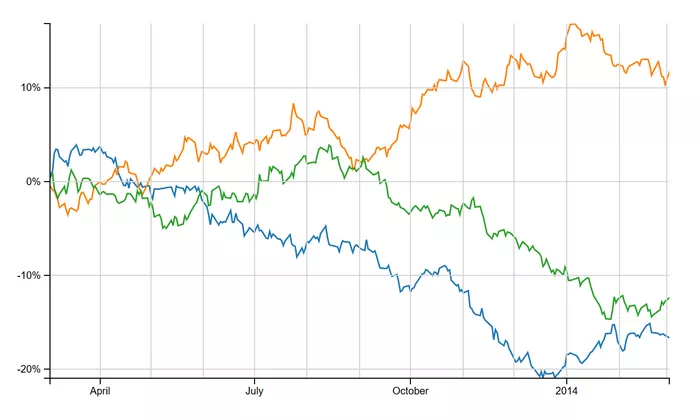Transferring stocks from one brokerage account to another is a straightforward process, but it can be confusing if you have never done it before. Whether you want to take advantage of better fees, improved trading platforms, or more investment options, transferring stocks is often a necessary step when changing brokers. This article provides a detailed guide on how to transfer stocks, what to expect during the process, and how to avoid common mistakes.
Why Transfer Stocks Between Brokers?
There are several reasons why an investor might want to transfer stocks from one broker to another. Some of the most common reasons include:
Better Fees: You may find that another broker offers lower commissions or fees.
Improved Service: Another brokerage might provide a better trading platform, research tools, or customer service.
More Investment Options: Some brokers offer access to a wider range of assets, such as international stocks, mutual funds, or ETFs.
Consolidation: You may want to consolidate your accounts for easier management.
Regardless of your reason, understanding the process and making sure it’s done correctly is crucial to ensure that your investments are safely transferred without any unnecessary tax implications or delays.
Types of Transfers: Full vs. Partial
There are two main types of stock transfers: full transfers and partial transfers.
Full Transfer
A full transfer occurs when you move all of your assets from one brokerage account to another. This includes stocks, bonds, ETFs, and any other investments in your account. Full transfers are typically done when you’re switching brokers entirely and want to close your old account.
Partial Transfer
A partial transfer happens when you move only a portion of your holdings to a new broker. This might be done when you want to test out the services of a new broker before committing fully or when you are consolidating some of your assets into one account.
In both cases, the basic process for transferring stocks is the same, though partial transfers can sometimes involve more logistical steps depending on the holdings you want to move.
Steps to Transfer Stocks from One Broker to Another
Step 1: Choose the New Broker
Before transferring stocks, you need to choose the new brokerage where you want to move your assets. Take the time to evaluate the new broker’s offerings, including:
Fees: Look at account maintenance fees, commissions for trades, and other charges that could affect your investment returns.
Account Types: Make sure the new broker offers the type of account you need (individual, retirement, margin, etc.).
Customer Service: Read reviews and consider contacting customer service to get a sense of the support you will receive.
Trading Platform: Ensure that the broker’s platform meets your needs in terms of functionality and ease of use.
Once you have chosen a new broker, you can open an account. Many brokers offer online applications that are easy to complete. You’ll need to provide basic information such as your Social Security number (for U.S. residents), proof of identity, and your financial history.
Step 2: Contact Your Current Broker
Once you’ve opened an account with the new broker, the next step is to contact your current broker to inform them that you want to transfer your stocks. This can typically be done by phone, online chat, or through your broker’s website.
During this communication, request a transfer form or inquire about their specific process for transferring assets. Be prepared to provide:
- Your account number
- Your full name and contact information
- The type of transfer you want (full or partial)
- The specific assets you wish to transfer
Step 3: Fill Out the Transfer Form
Your current broker will usually require you to fill out a transfer form. This form will ask for details about your account at both the old and new brokerages, such as the account numbers, names, and specific assets being transferred. The form is typically required to be signed and returned to your current broker before the transfer can take place.
Step 4: Complete the Transfer Request
After you’ve completed the form and submitted it to your current broker, they will initiate the transfer process. This involves sending your assets to the new broker through a system called the Automated Customer Account Transfer Service (ACATS). ACATS is the primary system used in the United States to transfer stocks and other securities between brokerage firms.
Once the transfer is initiated, the process can take anywhere from a few days to a few weeks, depending on the broker and the complexity of the assets being moved.
Step 5: Confirm the Transfer with Your New Broker
After the transfer request is completed, your new broker will typically confirm that they have received the assets and that everything is in order. Keep track of your accounts during this time to make sure the transfer is completed without any issues.
Your new broker will send you confirmation once the stocks have been successfully transferred and are available for you to trade or manage.
Step 6: Monitor the Transfer and Verify the Assets
After the transfer, it’s important to double-check that all of your stocks and assets have arrived in your new account. Ensure that the quantities match and that no stocks were missed during the process. If there are any discrepancies, contact your new broker’s customer service immediately to resolve the issue.
Costs Associated with Transferring Stocks
While transferring stocks between brokers is generally free, some brokers may charge fees for certain transfers. Be sure to inquire with both your old and new brokers about any fees that might apply. Common fees include:
Transfer Fees: Some brokers charge a fee to process a transfer request. These fees can range from $25 to $100 or more.
Account Closure Fees: If you are closing your old account as part of a full transfer, there may be a fee for account closure.
Inactivity Fees: If you decide to leave your account open with your old broker, you may be subject to inactivity fees or other maintenance fees.
Before proceeding, it’s wise to review your broker’s fee schedule to understand the potential costs involved in the transfer.
Common Issues and How to Avoid Them
While transferring stocks is generally a straightforward process, there are several issues that can arise during the process. Here are some common problems and tips for avoiding them:
1. Transfer Delays
Sometimes transfers can take longer than expected, especially if there are errors or discrepancies in your transfer request. To avoid this, double-check that all your information is accurate and complete before submitting the form.
2. Asset Eligibility Issues
Some assets may not be eligible for transfer through the ACATS system. If you hold certain types of mutual funds, restricted stocks, or international investments, these may require a different process. Before initiating the transfer, confirm with both brokers that all your assets can be moved.
3. Broker Incompatibility
Not all brokers are compatible with each other’s systems. If the transfer is unsuccessful, you may need to work with customer service representatives to resolve the issue. Be proactive in contacting both brokers if you encounter any compatibility issues.
4. Tax Implications
Transferring stocks between brokers does not trigger a taxable event, but if you decide to sell any of your stocks during the transfer process, it could result in capital gains taxes. Be mindful of your tax obligations and consult a tax professional if you’re unsure about the potential tax implications of your transfer.
5. Transfer Fees
As mentioned earlier, brokers may charge fees for transferring stocks. Make sure you are aware of these fees ahead of time so that they do not come as an unpleasant surprise during the process. Some brokers may offer to reimburse transfer fees if you meet certain conditions, such as transferring a large sum or opening a new account.
Conclusion
Transferring stocks from one broker to another is a simple process, but it requires careful planning and attention to detail. By following the steps outlined in this article, you can ensure a smooth transfer process. Be sure to choose the right broker, complete the necessary forms, and monitor the process closely to ensure all your assets are moved safely. Understanding the costs, time frames, and potential issues can help make the transfer as seamless as possible, giving you the flexibility to manage your investments in a way that works best for your financial goals.
By taking the time to research and execute the transfer process properly, you can take full advantage of better broker services and optimize your investment strategy without unnecessary delays or complications.
Related topics:



























